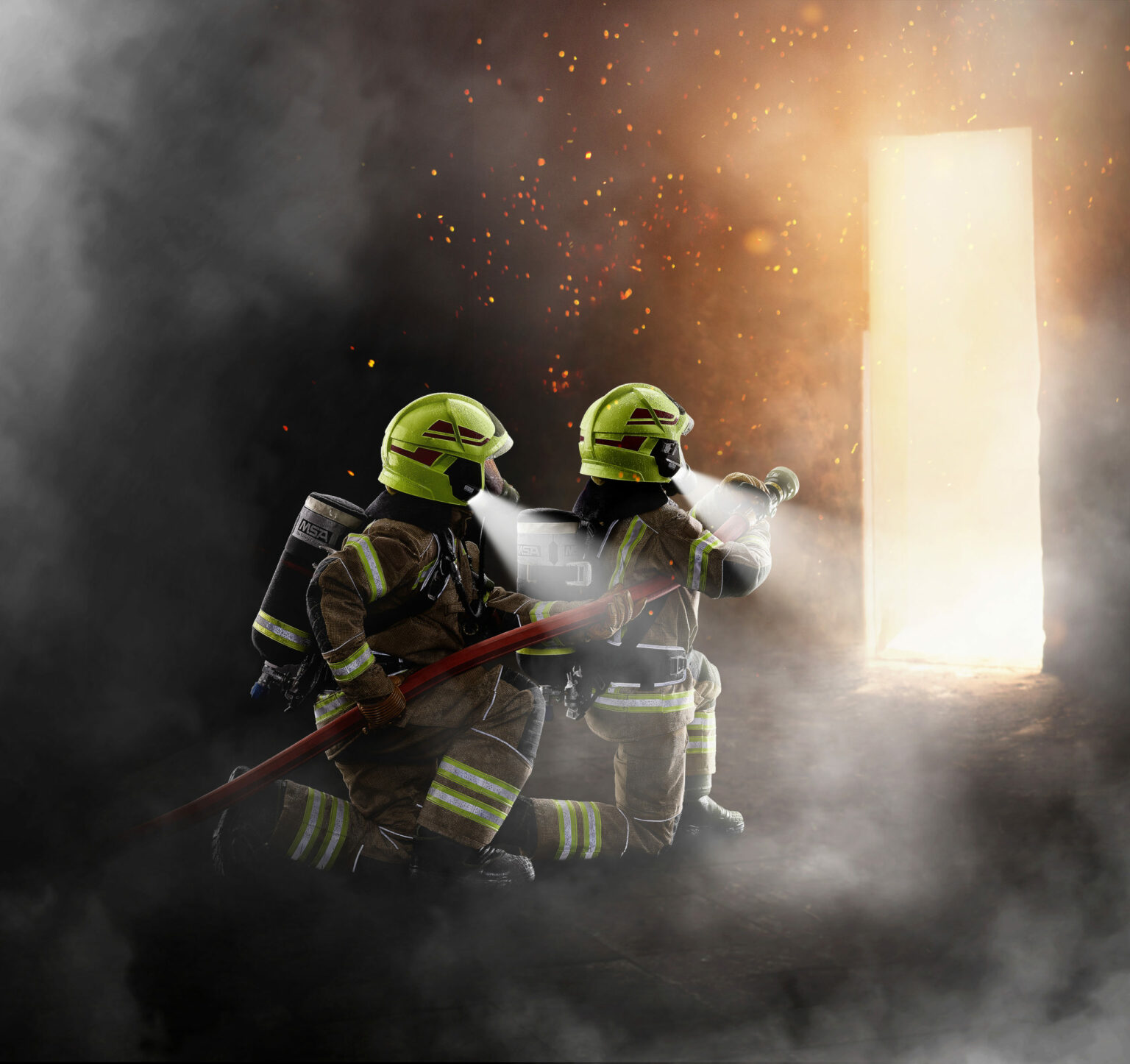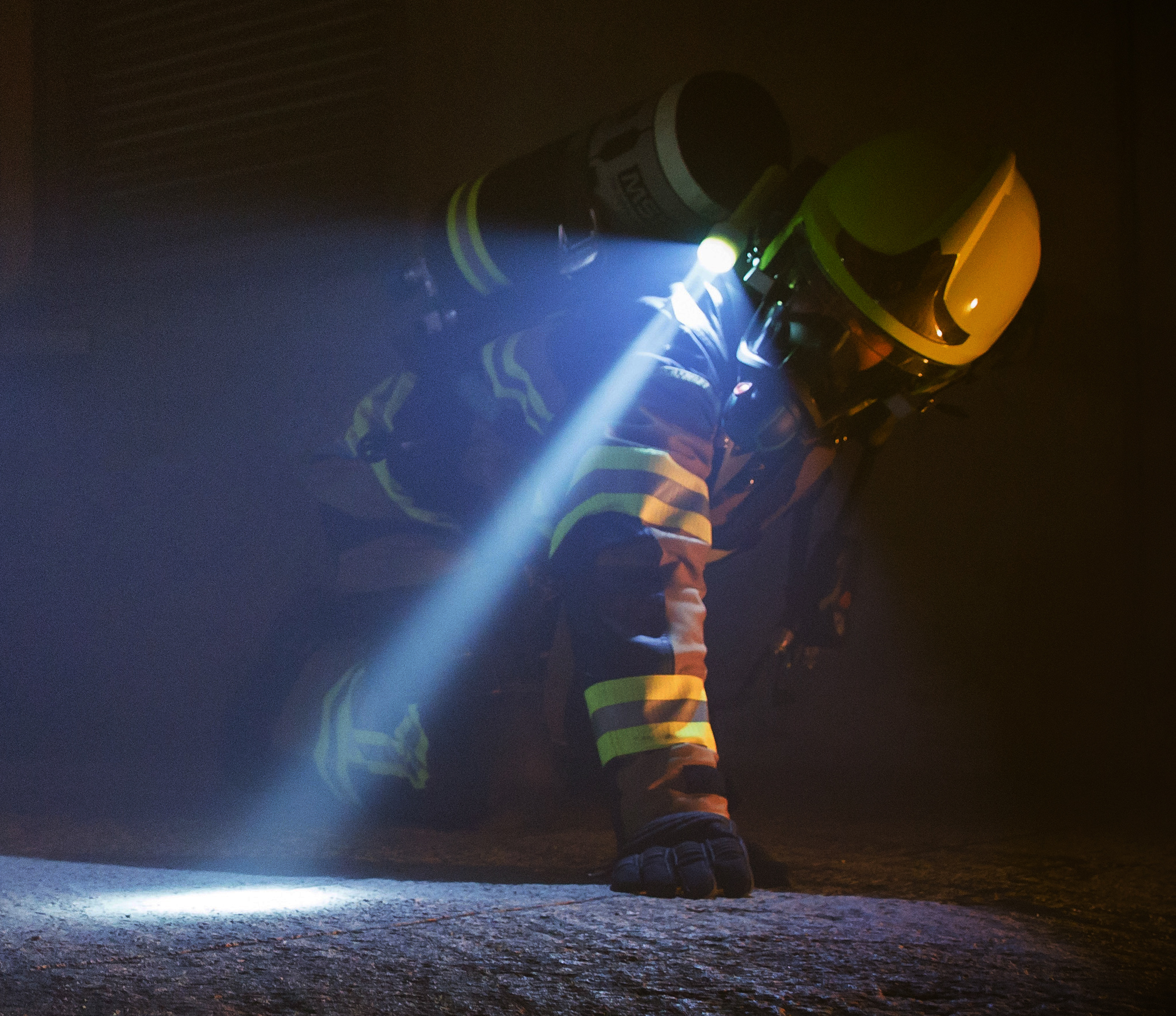Exclusive: Lighting Solutions to Help Improve Firefighters’ Safety
- September 23, 2021
- 8:00 am


Iain Hoey
Share this content
With the fireground changing, emergency lighting is more important than ever for firefighter safety
Whether you’re facing a dark long tunnel, responding to a road traffic collision, or extinguishing a fire, the lighting solutions you choose can play an important role in your comfort and in the success of your rescue operation.
Choose the Right Lighting Solution
Being able to work hands-free during a rescue operation is extremely important, as carrying a flashlight in hand all the time can be a dangerous inconvenience. To enable modern firefighters to perform their work efficiently, helmet-mounted and helmet-integrated lamps have become the solution of choice.
With the variety of lighting solutions available on the market, choosing the right option for you can be determined by the types of interventions your light will be serving. In the event of entering a fire scene where complete situational analysis is necessary, a powerful long-range light with a high level of smoke penetration might be required as it provides a strong and focused beam, also known as a spot beam, typically illuminating at a distance of up to 20 metres.
However, the task at hand is to read a map, pilot a drone, talk to others or simply see your hands and feet in a dangerous environment, a brighter and more diffuse proximity beam providing illumination of a local area up to 1.5 metres may be a better option.
It’s important to consider the value of the proximity beam as a complementary solution to the traditional spot beam. Even so, the need for integrated proximity beams in fire helmets has largely gone unfulfilled for a long time. To maximise its features, a firefighter’s light should be targeted in the right direction whilst also providing greater visibility of his or her surroundings. It is important that firefighters are not blinded by their own headlights. Switching from one beam to the other, or using both simultaneously, can be key to improving efficiency and safety. The need for these different beam settings during incidents has become essential, largely due to the increasingly varied and dangerous missions undertaken by today’s fire and rescue services.

“Whilst the choice will depend on unique situational factors, it is important that varying lighting options be made available,” says Aurélie Favre, Fire Helmet Market Specialist, Europe at MSA Safety. “Thanks to advancements in lighting technology, which combines a proximity light and a spot beam in a single integrated headlamp, MSA’s new lighting module can illuminate the firefighters’ environment without excessive head movement, minimising the risk of blinding others around them.”
How Technology Improves Without Minimising Ergonomics and Safety
The lighting system is one of the most important aspects of the fire helmet design. Therefore manufacturers need to consider how the helmet will be used, and in which scenarios, in order to build the best light integrations.
Several key differences between helmets emerge from these considerations, such as the weight and where the lighting module components are located. A convenient solution in a jet-style helmet can be placing LED lights on either side of the helmet. Evenly spread lights on the left and right side andhe positioned in the lower rim minimises the impact on the helmet’s balance. While improving visibility as the light is less likely to obscure the vision of other members of the team or civilians.
“But there are cases where torch lights need to be used in hand. MSA torch lights can also be detached and used as hand-held units,” says Favre. “These light attachments are fundamentally safe, with flame and heat resistant materials and no metal parts, for safe operation around electrical risks. The powerful LED light is adjustable in various positions, aligns to the target, and strikes the balance between being light and compact to help avoid snagging hazards whilst still being easy to maneuver when wearing gloves.”
An additional important element of the lighting application is the long life of the battery, easily replaceable or rechargeable after the rescue operation is completed. The choice between rechargeable and disposable batteries should be based on several different factors, such as the frequency and duration of typical interventions. As Favre reports “The rechargeable battery life of MSA’s lighting modules exceeds 200 cycles, which helps save costs in the long run, even though it is the more expensive option at first.”
“As the fireground dynamics change, up-to-date lighting solutions can help you meet these challenges,” concludes Favre.



